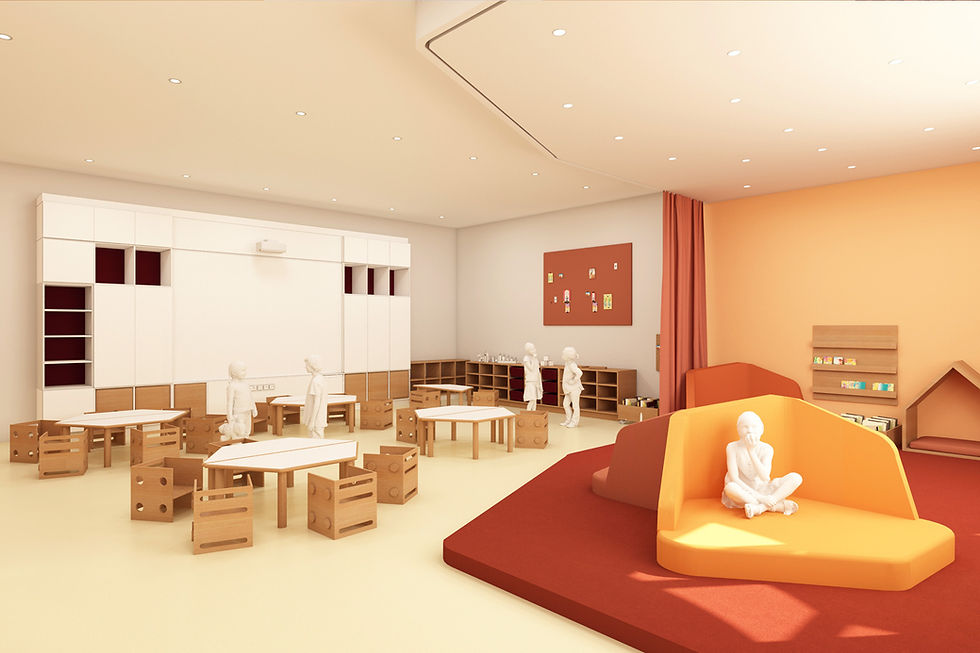More Than a Desk: The Hidden Power of Educational Furniture
- studiokidzink
- Feb 24
- 2 min read
Updated: Mar 12

Beyond the Surface: Why School Furniture Matters
When we think about education, we often focus on curriculum, technology, and teaching methodologies. But what about the furniture students use every day? Desks, chairs, and classroom layouts play a crucial role in student well-being, engagement, and academic success. At Kidzink, we believe that furniture should do more than just provide a place to sit—it should actively support the way students learn, move, and think.
The Science of Sitting: Why Ergonomics Matter
The average student spends thousands of hours sitting throughout their school years. Poorly designed furniture can lead to discomfort, poor posture, and even long-term health issues. Ergonomic furniture is designed to support natural movement, encourage proper posture, and reduce physical strain. At Kidzink, we incorporate principles of ergonomics into every piece we design, ensuring that students are comfortable, focused, and able to perform at their best.
Adjustable seating accommodates different body types and postures, reducing strain.
Supportive chairs promote spinal alignment and help prevent back pain.
Flexible furniture allows students to move naturally, improving circulation and concentration.
Movement and Learning: The Link Between Activity and Engagement
Sitting still for long periods can hinder concentration and productivity. Research shows that movement boosts cognitive function, enhances memory retention, and improves student engagement. That’s why Kidzink designs dynamic learning environments that encourage movement throughout the school day.
Standing desks allow students to shift postures and stay energised.
Modular seating encourages collaboration and flexibility in the classroom.
Multi-purpose furniture supports different learning styles, from independent study to group work.
By creating active learning environments, we help students stay engaged, focused, and ready to absorb new information.
Space Design: The Classroom as a Learning Tool
Classroom layouts impact more than just aesthetics—they influence interaction, creativity, and the overall learning experience. A well-designed space can promote collaboration, reduce distractions, and support different teaching styles. At Kidzink, we approach furniture and space design holistically, ensuring that each element works in harmony to enhance learning.
Zoned learning areas help differentiate spaces for group work, quiet study, and hands-on activities.
Flexible layouts adapt to different lesson structures, from traditional lectures to interactive workshops.
Acoustic considerations reduce noise distractions, improving focus and communication.
By treating furniture and space as an integrated system, we create environments that are not just functional but transformational.
The Hidden Impact: Well-Being, Confidence, and Success
When students are comfortable, engaged, and able to move freely, their confidence and academic performance improve. Well-designed educational furniture supports both physical and mental well-being, creating a positive learning environment.
At Kidzink, our approach goes beyond aesthetics—we prioritise ergonomics, movement, and space design to create furniture that actively enhances the learning experience. Our mission is to build environments that empower students, support educators, and shape the future of education.
Join the Conversation
What role do you think classroom furniture plays in education? Have you seen the impact of well-designed learning spaces in action? Let’s discuss on LinkedIn! We’d love to hear your thoughts and experiences.




























